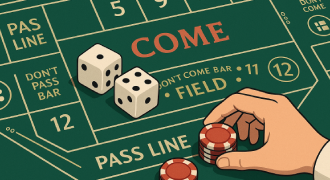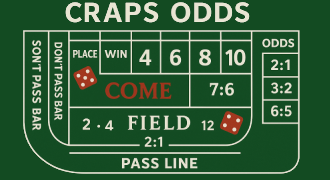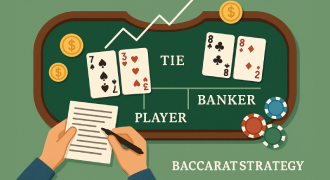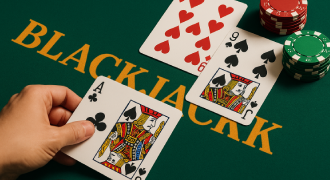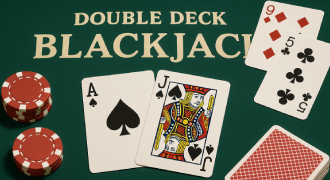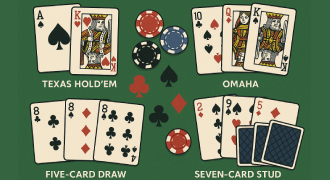Baccarat Punto Banco – Rules, Odds, and Winning Strategies
Step right up to our felt, where the cards are real, the payouts are crisp, and every round moves with an easy rhythm. In this guide we explain the full experience of Baccarat Punto Banco as we run it: from the very first chip to the final banner that shows the result. You’ll see how the draw chart works, which wagers fit steady play, and what to expect in both live studios and online lobbies. We keep everything practical, written by the casino that deals your favorite card game every day.
If you’ve ever wondered is Punto Banco, the same as baccarat styles, or how to read the on-screen roads that track results, you’re in the right room. We’ll compare variants briefly, outline smart habits, and give you tables you can screenshot for quick reference. By the end, you’ll know exactly why Punto Banco Baccarat is the table many guests choose when they want clear rules, simple bets, and a transparent pace.
What Is Punto Banco?
Punto Banco Baccarat is the streamlined baccarat format found in most regulated casinos worldwide. Two hands are dealt—Punto (Player) and Banco (Banker)—and you wager on which will finish closest to nine, or on a Tie if both totals match. Once chips are down, the drawing procedure takes over automatically, so you don’t need to press “hit” or “stand.” In short: clean choices, fixed logic, quick settlement.
We describe it on the felt and in the overlay as the Punto Banco Card Game because that’s exactly what it is: a fast contest between two hands, resolved by a standard chart that never changes mid-shoe. New guests appreciate how quickly they can learn the flow, while regulars enjoy how reliably their session plans translate from table to table.
🎴 Pros and Cons of Punto Banco
| ✅ Pros | ❌ Cons |
|---|---|
| Simple and straightforward rules — easy to learn even for beginners. | Little player control after placing a bet; outcomes are automatic. |
| Low house edge on Banker bets (around 1.06%). | Tie bets have a very high house edge (over 14%). |
| Fast-paced gameplay with quick rounds. | Can feel repetitive due to limited decision-making. |
| Available in nearly all online and live casinos worldwide. | |
| Elegant presentation and classic casino feel. |
History and Worldwide Popularity of Punto Banco
The modern format grew popular on North American floors in the mid-20th century before spreading across Europe and later into live studios. The appeal was the same everywhere: automatic draws, even-money settlement on the two main bets, and a presentation that keeps the spotlight on the reveal. When online streaming arrived, the version fit perfectly—no mid-hand decisions, just a clear countdown and real cards under bright lights.
Today, Baccarat Punto Banco is the default in most lobbies. You’ll see classic tables, speed tables, squeeze shows for drama, and themed rooms with multipliers—all built on the same engine. That consistency is why guests who try a demo for a few minutes can sit down at a live table and feel at home from the first round.
Key Rules and How It Differs from Chemin de Fer
In Punto Banco, you pick an outcome and the rest happens by chart. In Chemin de Fer, a player banks the game and some draw choices are made by the participants (especially around a total of five). That social layer can be great fun, but the Punto Banco Baccarat rules are simpler: the chart decides everything after bets lock. As a result, rounds are consistent, and settlement is immediate.
If you’re comparing Punto Banco vs Baccarat broadly, remember that “baccarat” is the family name; Punto Banco is the widely streamed, house-banked member of that family. When someone asks, “is Punto Banco the same as Baccarat?”—the short answer is that Punto Banco is the most common version of baccarat played in casinos. We’ll keep using the exact phrase you might see on lobby cards—Punto Banco Baccarat—so you can match what you read to what you see.
Punto Banco Gameplay and Betting Options
At our tables you’ll find three core pads: Player, Banker, and Tie. You can also encounter optional side bets such as Player/Banker Pair or Perfect Pair, depending on the provider. For steady sessions, keep your focus on the three core Punto Banco bets; side bets are fun, but they add swing.
The interface is designed for fast, accurate placement: a timer counts down, chips sit close to the pads, and a “Repeat” button makes your next stake simple. Totals appear in large digits after the reveal so you can confirm the result before the payout banner flashes.
Player, Banker, and Tie Bets Explained
Before diving into the specifics of each bet type, it’s important to understand the core options in baccarat: Player, Banker, and Tie. Each bet carries its own odds and house edge, which significantly impacts your strategy. Here’s a breakdown of these three fundamental bets:
- Player (Punto): Wins if the Player hand finishes closer to nine. Payout: 1:1.
- Banker (Banco): Wins if the Banker hand finishes closer to nine. Payout: 1:1 (a small commission may apply on classic tables, or a posted exception in no-commission rooms).
- Tie: Wins if both totals match. Payout: usually 8:1 (sometimes 9:1), reflecting how rarely Tie occurs.
In practice, Banker and Player are your stable choices, while Tie is an accent. If you’re tracking Punto Banco odds on a notepad, note that Banker has a small long-run edge due to how the draw chart resolves second.
Card Drawing and Scoring Rules
Values are simple: A=1, 2–9 as printed, 10/J/Q/K=0. Totals keep only the final digit of the sum (e.g., 15 becomes 5). Two-card 8s or 9s are naturals and end the round immediately. Otherwise the chart checks whether Player draws first, then whether Banker draws, possibly considering Player’s third card.
To keep things friendly for new guests, we include the draw chart in the overlay. You don’t need to memorize it; the dealer follows it every round.
Variations in Drawing Procedures
Most studios use six or eight decks and the same third-card logic. Where you’ll notice change is the settlement model (commission vs no-commission) and presentation (speed, squeeze, multipliers). The underlying baccarat Punto Banco odds remain in the same neighborhood because the engine—the drawing rules—doesn’t change.
If you ever see a special label (e.g., “No Commission” or a multiplier edition), tap the info icon. We print a one-line exception note so you can align expectations before the countdown begins.
House Edge and Probabilities in Punto Banco
Understanding likelihood helps you keep sessions calm. Banker tends to win slightly more often than Player over large samples; Tie is uncommon, which is why its payout is higher. Commission (or a posted exception) keeps the return fair and predictable. Use the table below as a quick reference—you’ll see the same structure on our help panel.
Payout & Probability Snapshot (typical multi-deck)
|
Bet |
Typical Payout |
House Edge (approx.) |
Behavior |
|
Banker |
1:1 (commission on classic tables) |
Low |
Wins slightly more often |
|
Player |
1:1 |
Low-mid |
Simple settlement |
|
Tie |
8:1 (sometimes 9:1) |
High |
Rare; high variance |
|
Player/Banker Pair (optional) |
11:1 (varies) |
Higher |
Side bet, independent trigger |
These figures explain why steady play leans on Player/Banker. When guests ask about Baccarat Punto Banco odds compared with other games, we show this table and point to the fixed chart as a comfort factor—no mid-hand errors to reduce return.
Common Mistakes to Avoid in Punto Banco
The most common slip is chasing—raising chips fast after a single loss. Instead, set a base unit and a maximum per hand, and pause on schedule. Another frequent mistake is treating Tie as a main plan; remember, it pays more because it lands less. Save it for an occasional sprinkle if you enjoy the thrill.
Finally, some players forget to read the settlement line on the felt. Classic 5% commission and no-commission exceptions settle Banker wins differently. That one line matters more than any tote board streak you’ll ever see.
Online vs Land-Based Punto Banco
Land-based rooms bring atmosphere and table talk; online studios provide multi-angle video, instant history, and a rules overlay you can open at any moment. The math is the same, and we audit both settings with the same rigor. If you like speed, online tables make it easy to move between limit bands or variants without walking the floor.
For new players, we recommend testing a free version (RNG demo) to learn chip placement and tempo, then joining a live table. If you prefer to play Punto Banco online exclusively, enable responsible-play tools like session reminders and deposit limits so the experience stays comfortable.
Online Punto Banco Features and Scoreboards
Many studios include “roads”—visual trackers of prior outcomes. They don’t predict the future, but they help some players pace decisions or keep notes. We teach new guests how to read them quickly so they can join the conversation without confusion.
- Bead Plate, Big Road, Cockroach Pig, etc.
In online Punto Banco, several scoreboards, such as the Bead Plate, Big Road, and Cockroach Pig, are commonly used to display the outcomes of each round. These scoreboards are designed to help players track the results and detect any potential trends that may emerge during the game. The Bead Plate is one of the most straightforward, using colored beads to represent each hand’s result, making it easy for players to see whether the Player or Banker is winning.
- How to Interpret Game Trends (if available)
When playing online Punto Banco, interpreting the trends on these scoreboards can be an intriguing aspect of the game, although it is important to remember that Punto Banco is ultimately a game of chance. The Big Road scoreboard shows a simple pattern of the results, marking Player and Banker wins in a grid format, which some players analyze for streaks and repeating patterns. The Cockroach Pig adds further granularity, breaking down the data into more detailed segments, allowing players to spot smaller trends in the results.
Roads & Meanings (quick legend)
|
Road |
What It Shows |
How Players Use It |
|
Bead Plate |
Raw result sequence |
Simple glance at recent hands |
|
Big Road |
Streaks vs chops |
Table “mood” shorthand |
|
Small Road / Big Eye / Cockroach Pig |
Derived pattern views |
Conversation tools; pacing aids |
We emphasize that these are game trackers, not guarantees. If a road calms your rhythm, use it; if it distracts you, hide it and focus on the timer.
Effective Punto Banco Strategies
Strategy here means structure: picking a main outcome, sizing units, and pausing on schedule. The draw chart doesn’t change, so your edge lies in discipline. Keep Tie tiny, keep side bets occasional, and keep your attention on the felt note about settlement.
If you want a written plan, jot down three lines: base unit (1–2% of your bankroll), max units per hand (3–4), and a pause every 15–20 rounds. That small card will do more for you than any rumor about streak magic.
Safe Betting Techniques
Favor Banker or Player as your “main lane,” then use the other for variety. This reduces the urge to chase and makes results easier to track in units rather than currency. For guests looking up Punto Banco Baccarat strategies, this is where we always start: simple, repeatable, calm.
Avoid stacking side bets when stakes feel large or the shoe turns choppy. The main bets already deliver a comfortable return profile; extras are for entertainment, not for grinding sessions.
Using Martingale and Other Systems
Progressions like Martingale, Fibonacci, or 1-3-2-4 manage stakes—not outcomes. They can smooth or amplify swings inside your limits, but they don’t change the chart. If you test them, do it at very low units and with a firm stop; never let a sequence push you beyond table caps or your comfort.
We treat systems as pacing tools. If one makes you feel in control and stays within limits, fine. If it distracts you from the timer or tempts you to overbet, switch to flat stakes and a strict pause schedule.
Bankroll Management Tips
Effective bankroll management is key to long-term success in baccarat. By setting clear limits and sticking to a plan, you can enjoy the game without risking more than you're comfortable with. Here are some essential tips to help you manage your bankroll wisely:
- Set a base unit you can repeat for 40–60 rounds.
- Use session timers so breaks happen before fatigue sets in.
- Track in units (win/loss) rather than currency; it keeps emotions steady.
This is where Punto Banco Baccarat strategies become personal. The best plan is the one you can execute without strain across different tables and moods.
Why Try Punto Banco?
You get simple rules, transparent settlement, and a steady pace that fits both quick breaks and long evenings. Whether you’re on a studio stream or a physical floor, the experience feels familiar because the chart never changes and the payouts are printed on the felt. That mix is why Baccarat - Punto Banco slot keeps its place as the go-to table for first-timers and veterans alike.
If you enjoy drama, try a squeeze room; if you want speed, choose a short countdown; if you like variety, explore multiplier editions—but start with classic tables to lock your routine. When you’re ready to add flavor, do it slowly and keep your base habits intact. From our side of the felt, that’s the surest path to comfortable play in Baccarat Punto Banco sessions.
FAQ
Why is Punto Banco the most popular Baccarat version?
It’s fast to learn and consistent to deal. You choose a result, the chart handles draws, and settlement is immediate. Compared with styles that involve player decisions, this keeps the focus on pace and presentation. That’s why your lobby lists so many Punto Banco Baccarat tables.
Can betting systems like Martingale work in Punto Banco?
They can structure stakes, but they don’t change outcomes. Use them, if at all, with tiny units and firm stops. As we tell guests every day, calm pacing and clear limits beat any promise of a mechanical win.
Are rules consistent across casinos?
Core values and the draw chart are the same. What varies is settlement on Banker wins (commission vs a posted exception) and whether side bets or multipliers are available. Always read the felt note before your first chip—those two lines tell you everything that matters.
What is the best bet in Punto Banco?
Over many rounds, Banker edges Player slightly due to how the chart resolves. Commission or exceptions balance the return, but Banker remains the most common base bet for steady plans. Keep Tie occasional.
Is card counting effective for this variant?
Not in any dependable way. Multi-deck shoes, burns, and fixed draws dilute small composition effects. You’ll get farther with unit sizing and a pause schedule than with counting.
Can Punto Banco be played with a live dealer?
Yes. Live studios stream real cards with multi-angle cameras, synchronized audio, and a rules overlay. If you enjoy human cadence and table chat, it’s a great match.
Is free online practice available for Punto Banco?
Most lobbies offer demos and tutorials. Look for a Punto Banco free version to learn controls and rhythm, then switch to live once you’re comfortable.



